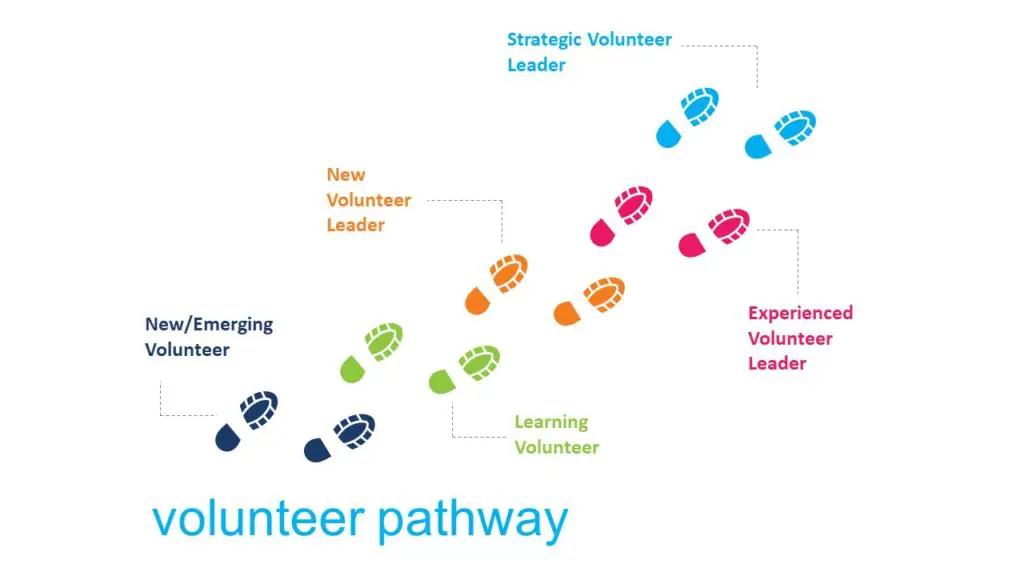In our April salute to National Volunteer Week, we talked about using this time to reassess your volunteer training by considering flipping your training programs from a global “here’s what you need” to one that begins with the learner, i.e., what the volunteer needs. To explore more on this, Peggy Hoffman, president of Mariner Management, and Kristine Metter, MS, CAE, president of Crystal Lake Partners, gathered a workgroup of association professionals to look at how we can use a learning journey map concept (based on the customer journey map concept) as a way to better align training with volunteer motivations and aspirations.
In our June 30th webinar with Billhighway, Let’s Reboot Volunteer Training, Peggy and Kristine officially introduced the concept. This new approach would allow us to shift from a transactional (how things are done) to a more developmental approach (leadership cultivation) leading to more success in retaining volunteers and developing future leaders
Listen to the full webinar for more details and examples on how this can work. Be sure to check out a quick snapshot below of what was discussed as well as several resources to help you get started.
Takeaways:
Training Checkboxes. We can start by understanding that there are several key reasons members may be reluctant to volunteer or quit their volunteer duties:
- a feeling they lack the necessary skills or knowledge
- a disappointing experience brought about by inadequate training/orientation/resources
- a disconnect in alignment between HQ and chapters
A fully developed training program on the other hand can deliver a big ROI for both the volunteer (training as a perk) and the association (better volunteers). Who wouldn’t want that outcome!
Peggy and Kristine divided the conversation into 3 key areas:
Power of the Volunteer Matrix. To frame the approach, we start with a typical volunteer pathway consisting of 5 learning and development stages …
In each level, there are items that volunteers may need to know: Institutional Knowledge, Association Governance, Project-specific, Leadership Skills. Digging deeper, each of these items consists of basic (foundational), detailed (what one needs to know to make it happen), and strategic (how it all fits together) views. The depth to which each volunteer goes depends on their pathway. Pulling this information together, you can begin to map out each member’s characteristics, their association-specific knowledge base, and general skills. Tip: Decide which you need to teach (i.e., strategic thinking, management) vs what you can automate (i.e., technology).
Realize every volunteer comes into the association at different levels. Ask each volunteer “what are your volunteer motivations?”
Power of the Learning Journey Map. Once you have mapped out the content based your volunteer motivations and where they are in the pathway, you can then connect your volunteers to the right position as well as match the training and development to that person’s situation. This powerful process empowers volunteers to make choices in their learning journey, shows the value of volunteering as a way to learn and grow, and provides the structure for you to offer a broader array of programs that will ultimately lead to volunteers who are better prepared to strategically lead your association.
Power of a Training Strategy. A learning journey acknowledges several steps in the learning process: preparation, acquisition of knowledge/skills, use of new skills, maintenance over time. It also acknowledges the diversity in our experiences and our goals. Building your training around journey mapping, you can offer the right training at the right time, i.e., the moment of need. When building your strategy, keep in mind that orientation and training should be accessible year-round (through a variety of channels in real time and asynchronously), cover the four key areas (matrix), and address the stages of volunteer engagement.
Taking the Next Step:
- Map your pathway and scenarios: Gather a focus group of volunteers to help.
- Identify what volunteers need to know: Let effectives practices in chapter management, operations, and governance guide here.
- Plot a course: Go big or go small … importance is understanding the priorities and the resources at hand
*Here are some more resources to help you on your way:
- Download the Volunteer Learning Journey Toolkit & check all the resources!
- Download Coaching Volunteer Leaders: Tips for Creating a 12-Month Strategy
- Check out advice in Where to Start in Training Volunteers
- Download The Feedback Alternative: FeedForward for a look at shifting to a coaching role to develop volunteer
- Listen to the Webinar on Pivoting Leadership Conference to Virtual
- Read 4 Stories from associations on shifting training
- Read Chapter Training: Available at the moment of need
- Read more on Adult Learning: Adult Learning 101 for Edupreneurs and How to Lead a Masterclass: Effective Strategies for Teaching Adult Learners
*This webinar is part of our ongoing series with Billhighway.

